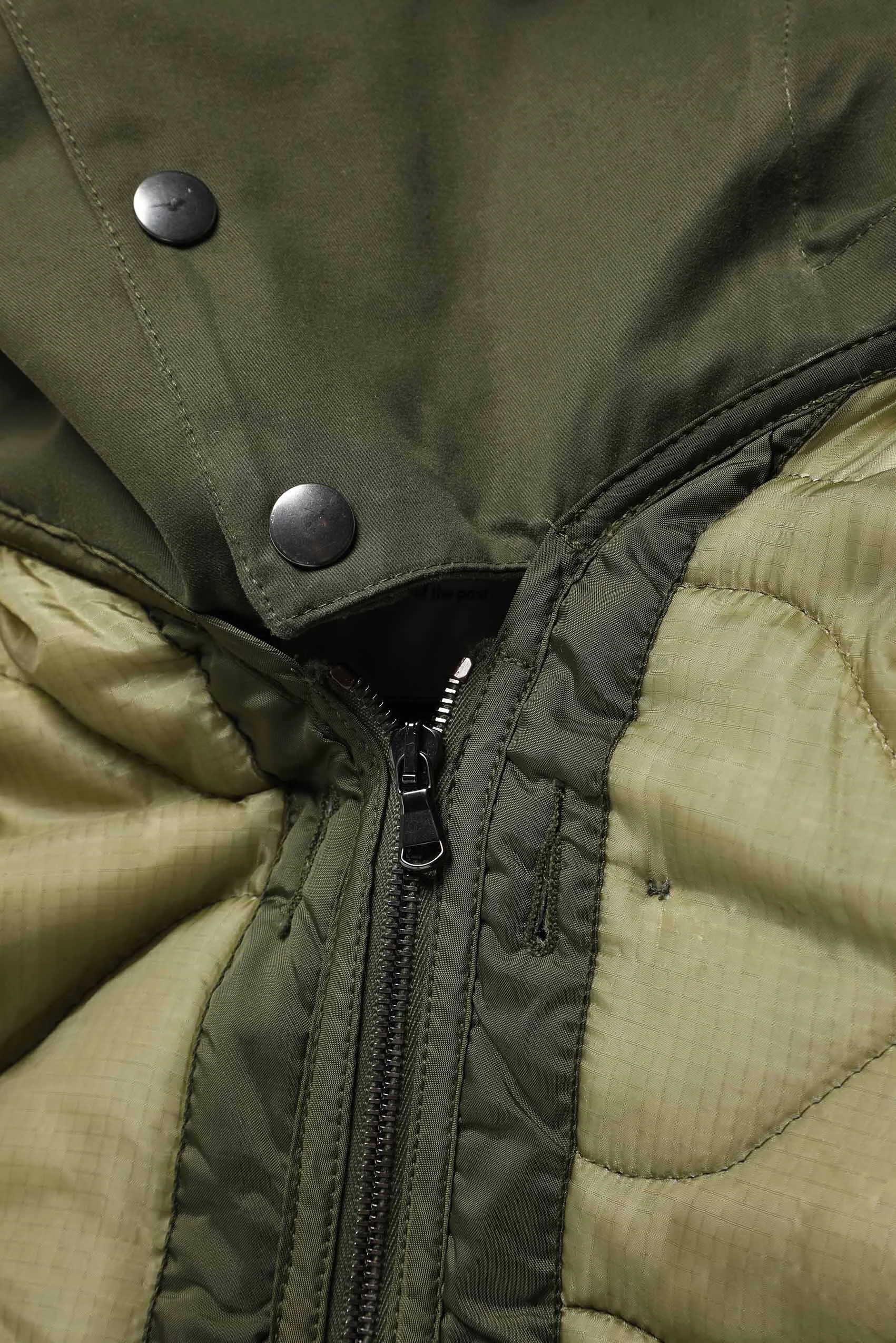MYAR FW20COLLECTION / RE_CHECK / PRESENTS
USJ0B
INTERNAL LINING US ARMY JACKET - 2000'S
PRESENT
This two internal USARMY parka lining had been assemble together giving shape to a long padded jacket. We added a central double slider zip going from the top till little below the waist line, we add two lower pocket inspired by the M69 USARMY cargo pants using deadstock fabric, create two new top welt pocket using the original quinted lining fabric, we constructed a hood with a tree snap buttons closing using the same green deadstock fabric used for the cargo pockets.
Final touch we add the compass pockets on the left sleeve.
PAST
This is the lining of the M65 field jacket.
On the inside of the jacket there are buttons for attaching the insulating liner in cold weather. The liner is speciFed by MIL-L-43536. It has open underarms, buttonholes at the neck and front edges, and buttonhole tabs at the sleeve bottoms for attaching the liner to the jacket. The liner is quilted and made of polyester batting covered with 3 plies of ripstop nylon cloth. It was redesigned (i.e. buttons were added to its front) to make it capable of being worn independently of the eld jacket.
MYAR commitment is to bring back to life past used military garments that have been stocked for long time in darkened warehouse, bringing back the light in the present time, for a second life in a civil environment.
The up-cycling process involving MYAR is not only an aesthetic intervention but also a process of historical knowledge
On each garment is applied a QR code that, once scanned, will tell the historical origin of the piece and the type of workmanship that has been made.
This process of customization is also witnessed by a small white cloth sachet containing scraps of fabrics: a part of the past of this garment, which has been modified from the original to be worn today for the future coming.
MYAR a modern view of the past





